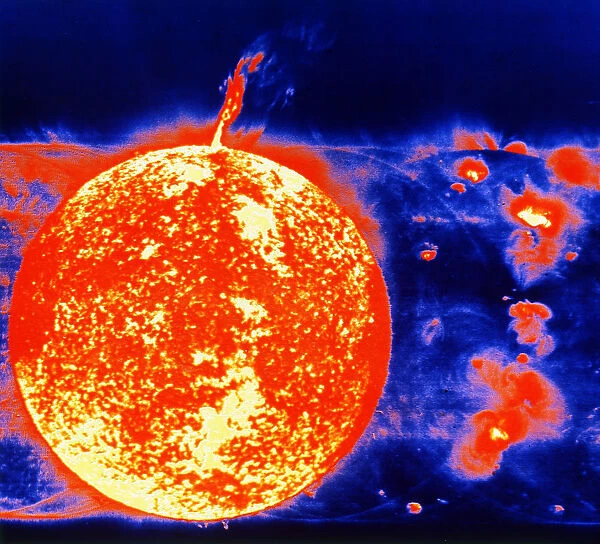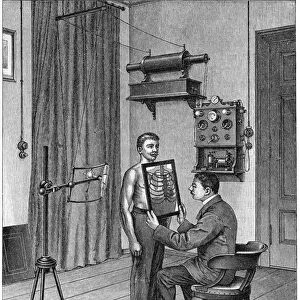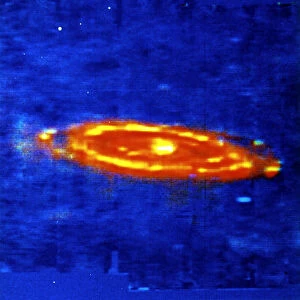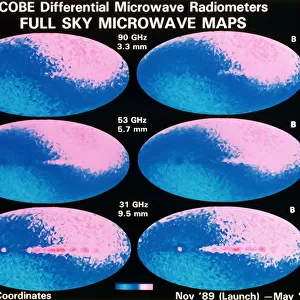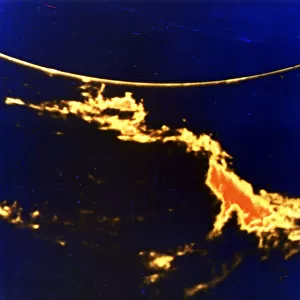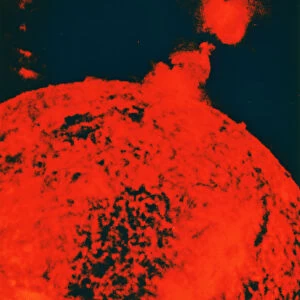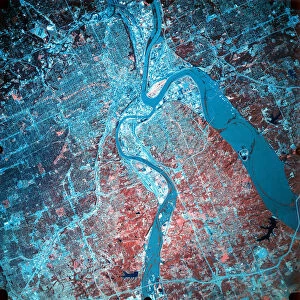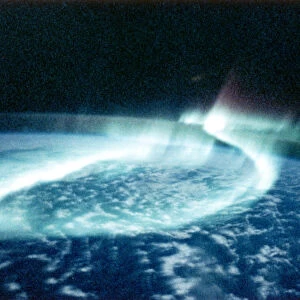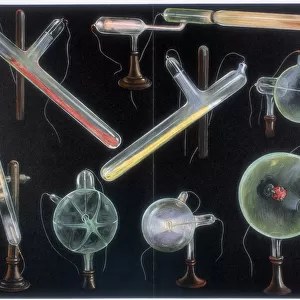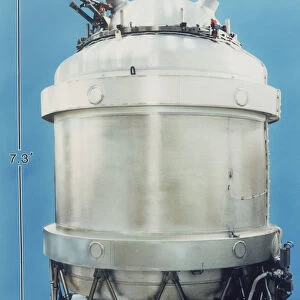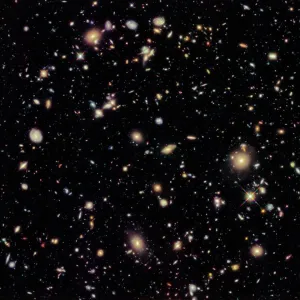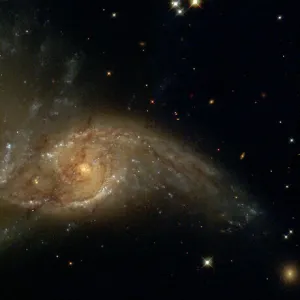Photo Mug > Science > Space Exploration > Telescopes Radio
Photo Mug : Sunspots and solar prominences, 1973
![]()

Home Decor from Heritage Images
Sunspots and solar prominences, 1973
Sunspots and solar prominences, 1973. Image from Skylabs solar telescope. Sunspots are relatively cool areas on the Suns surface, the photosphere. Their temperature is about 3800 degrees Kelvin, as opposed to around 5800 degrees on the rest of the photosphere, and they can measure as much as 50, 000 kilometres across. The number of sunspots is greatest at the point in the cycle of solar activity known as the solar maximum, which occurs roughly every 11 years. They form when magnetic field lines below the surface become twisted and protrude through the photosphere. Sunspots are closely associated with the occurrence of solar flares, or prominences, massive eruptions of ionized hydrogen gas, often larger than the Earth, which arch away from the surface of the Sun. Some violent flares called Coronal Mass Ejections interact with the Earths magnetic field and can disrupt radio communications and produce spectacular aurora displays
Heritage Images features heritage image collections
Media ID 14863824
© Oxford Science Archive / Heritage-Images
1970s Nasa Oxford Science Archive Prominence Radiation Seventies Skylab Solar Astronomy Solar Flare Space Space Station Star Sunspot
Large Photo Mug (15 oz)
Bring the wonders of space into your daily routine with our Media Storehouse Photo Mug featuring an awe-inspiring image of Sunspots and Solar Prominences from 1973. Captured by the Skylab solar telescope, this stunning photograph showcases the intriguing sunspots - cooler areas on the Sun's surface - and their dynamic solar prominences. Each sip from this mug will transport you to the far reaches of our solar system, making your coffee or tea break an out-of-this-world experience. Perfect for space enthusiasts, scientists, or anyone who appreciates the beauty of the universe, this unique mug is a must-have addition to your collection. Order yours today and let the adventure begin!
Elevate your coffee or tea experience with our premium white ceramic mug. Its wide, comfortable handle makes drinking easy, and you can rely on it to be both microwave and dishwasher safe. Sold in single units, preview may show both sides of the same mug so you can see how the picture wraps around.
Elevate your coffee or tea experience with our premium white ceramic mug. Its wide, comfortable handle makes drinking easy, and you can rely on it to be both microwave and dishwasher safe. Sold in single units, preview may show both sides of the same mug so you can see how the picture wraps around.
These are individually made so all sizes are approximate
FEATURES IN THESE COLLECTIONS
> North America
> United States of America
> Related Images
> Science
> Space Exploration
> Related Images
> Science
> Space Exploration
> Telescopes Radio
EDITORS COMMENTS
This print titled "Sunspots and solar prominences, 1973" showcases the mesmerizing beauty of our closest star, the Sun. Captured by Skylab's solar telescope, this image offers a glimpse into the intricate details of sunspots and solar prominences. Sunspots are cooler regions on the Sun's surface known as the photosphere, measuring up to an astonishing 50,000 kilometers across. With temperatures around 3800 degrees Kelvin compared to the rest of the photosphere at approximately 5800 degrees Kelvin, these spots stand out prominently. Their occurrence is highest during the solar maximum phase that repeats every 11 years. The twisted magnetic field lines beneath the surface give rise to sunspots as they protrude through the photosphere. These fascinating phenomena are often accompanied by massive eruptions called solar flares or prominences. These eruptions consist of ionized hydrogen gas arching away from the Sun's surface and can be larger than our planet Earth itself. Coronal Mass Ejections (CMEs) resulting from violent flares interact with Earth's magnetic field and have potential impacts such as disrupting radio communications and creating breathtaking aurora displays in our atmosphere. This remarkable photograph not only illustrates natural phenomena but also serves as a testament to humanity's exploration of space through Skylab - America's first space station launched by NASA in collaboration with Oxford Science Archive. It reminds us of our continuous pursuit of knowledge about celestial bodies like stars while highlighting their immense power and influence over our planet Earth.
MADE IN THE USA
Safe Shipping with 30 Day Money Back Guarantee
FREE PERSONALISATION*
We are proud to offer a range of customisation features including Personalised Captions, Color Filters and Picture Zoom Tools
SECURE PAYMENTS
We happily accept a wide range of payment options so you can pay for the things you need in the way that is most convenient for you
* Options may vary by product and licensing agreement. Zoomed Pictures can be adjusted in the Cart.


